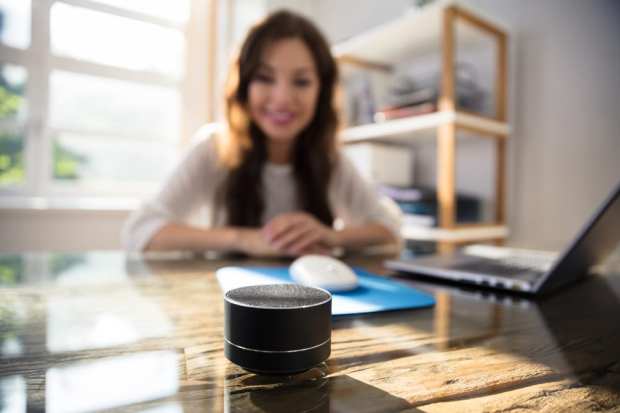How Voice Will Capture The Connected Commerce Frontier

A massive sea change has happened in the world of retail – albeit so subtly and swiftly that most consumers probably never even felt it happen. Shopping went from being a discreet, defined, daily (or weekly or monthly) activity to something that has become like the background noise of modern interaction. As recently as the turn of the century, “going shopping” meant exactly that for over 90 percent of consumers: getting in a car and physically going someplace to make purchases.
Flash forward to the closing months of the second decade of the 21st century, and shopping is not so much a thing that consumers go do, so much as something that is happening in the background of everything else customers are already doing.
According to the 2019 edition of the PYMNTS How We Will Pay Study, the average consumer does about 12 activities over the course of a day, and makes a purchase during about four of them. That means commerce is a background activity about a third of the time – and that’s just the general population average. For younger consumers – bridge millennials in particular – the effect is even more strongly pronounced. Among that demographic segment, consumers engage in roughly 14 activities during the course of the day and make a purchase during roughly six of them – more than half the time.
But if this decade was about making commerce more connected and thus contextual, the next one, the data indicates, will be all about voice emerging as what Karen Webster recently called “connected commerce’s killer app.”
The numbers don’t lie, she noted – and they point in a fairly uniform direction. As of the 2019 report, nearly a full third of consumers (31 percent) report owning at least one voice-activated device, up from 26 percent the previous year and 14 percent in 2017. And out of those consumers, about a third (31 percent) report they have used their voice-activated devices to make a purchase. All in, that means in 2019 – about five years after Alexa and the Amazon Echo made their first appearances on commercial markets – roughly 10 percent of consumers have used voice-activated devices to shop.
The most popular uses involve ordering food – either groceries or takeout – with an emerging enthusiasm for clothes.
“Sure, that’s still just a sliver of all commerce, but it is growing rapidly as more skills expand the number of things that can be ordered using voice, and as the virtual assistants that are the intermediaries of those purchases get smarter in managing those requests,” Webster noted.
And those skills are literally expanding daily. Earlier this week, SoundHound Inc., a voice-enabled artificial intelligence (AI) and conversational intelligence technologies startup, announced a partnership with Aisle Ahead Inc. – specifically, its BigOven recipe platform that contains instructions for roughly 500,000 food and drink items.
Via the new pair-up, the voice AI user can make simple voice queries to ask for the name of a dish, type of cuisine, ingredients needed for a recipe, nutrition information and more.
“This partnership with [SoundHound’s] Houndify will not only elevate the home cooking experience but also allow us to connect more people with the foods they love,” said Steve Siopsis, CEO at Aisle Ahead Inc. “It furthers our mission of bringing food content anywhere, whether it’s for making grocery lists, throwing together dinner based on what you have in your cabinets or easily sharing your favorite dishes with your loved ones. Houndify is one-of-a-kind in that it is the only platform that allows brands to remain in complete control of their data and their brand.”
Incidentally, it also creates the right context for commerce, as consumers can add the recipe items they are missing to their digital shopping list as a seamless part of their meal prep process.
And voice can do more than make it easier to buy items. Increasingly, according to both the How We Will Pay data and recent news items, voice is a critical player in commerce-adjacent activities that ultimately boost the net number of successful conversions.
According to the data, of the 31 percent of voice-enabled device owners who use voice to make a purchase, 45 percent do so across multiple voice-enabled environments.
And in retailer news, there is an increasing push to integrate Alexa into the purchase path. Oreo, for example, earlier this week announced a “guess the mystery flavor” contest, which came with an accompanying Alexa skill for support. Alexa will respond to the question “What’s new with Oreo?” with news and information about the cookie brand, including special announcements. Alexa will also offer clues about the mystery flavor.
And if that customer wants to add Oreo cookies to their shopping list and have them delivered to their door, Alexa would be happy to help with that, too.
So has contextual commerce found its technological soulmate with voice-enabled commerce? While there are no sure things in life or payments, it is safe to say the data looks promising – and well worth following going forward.
